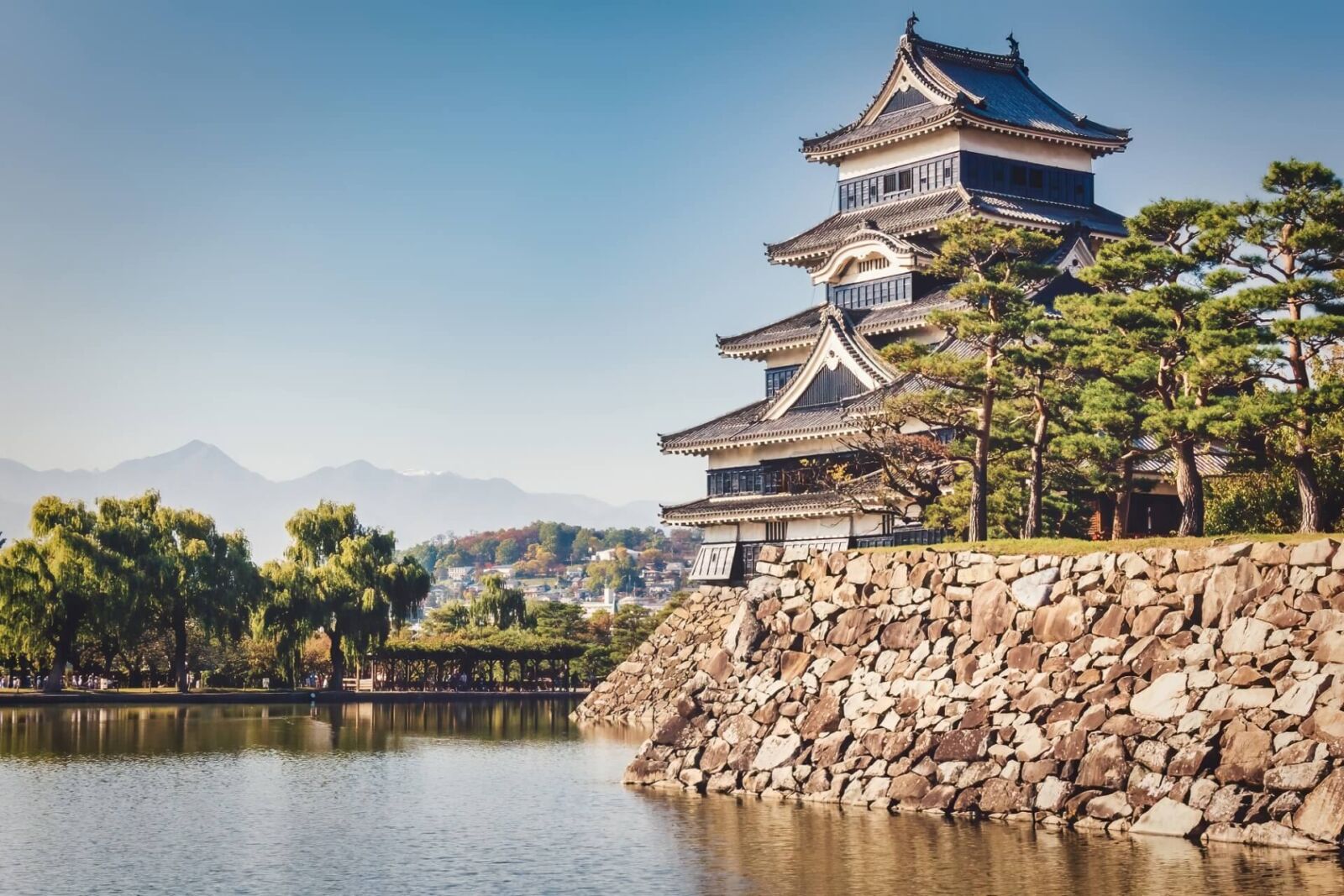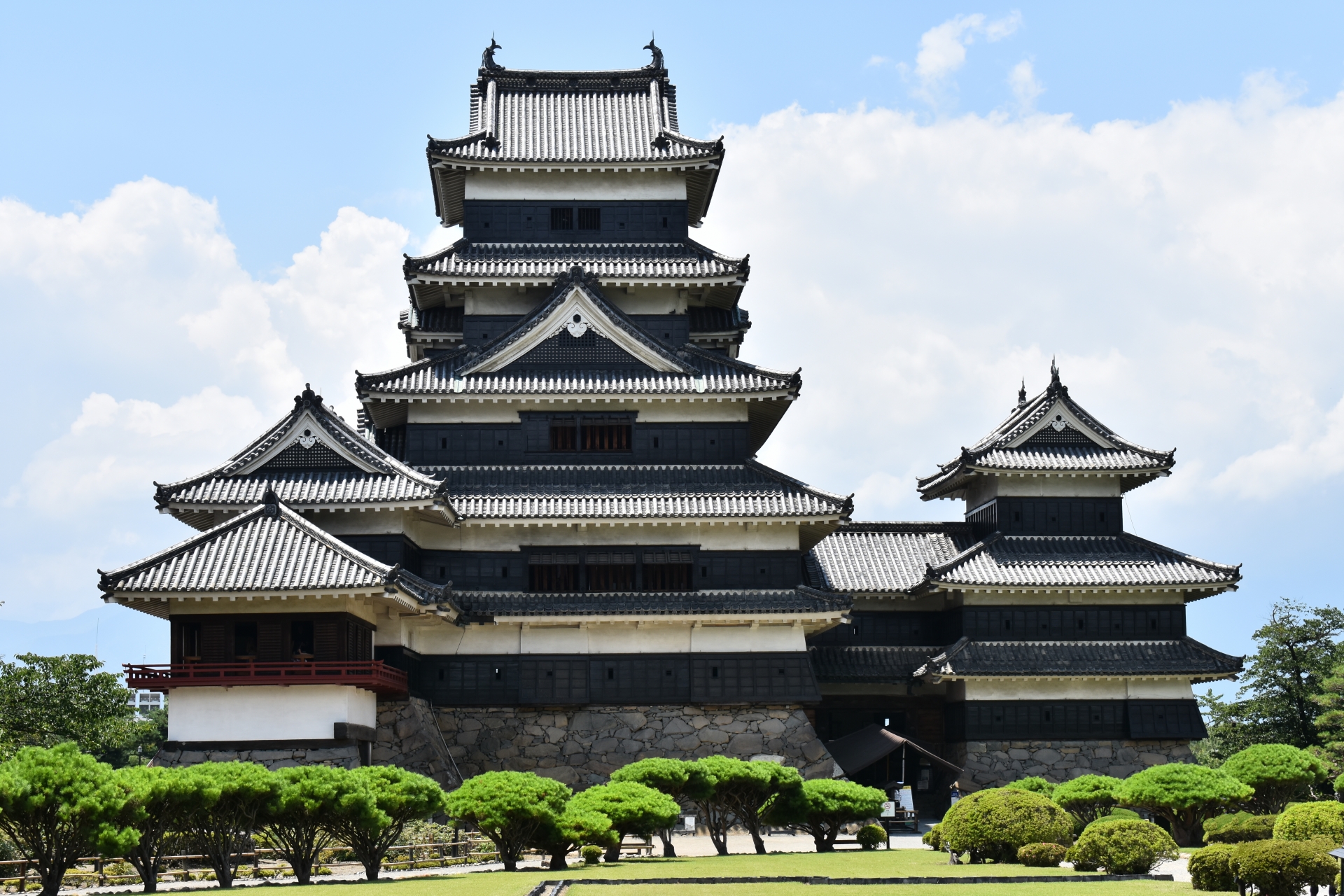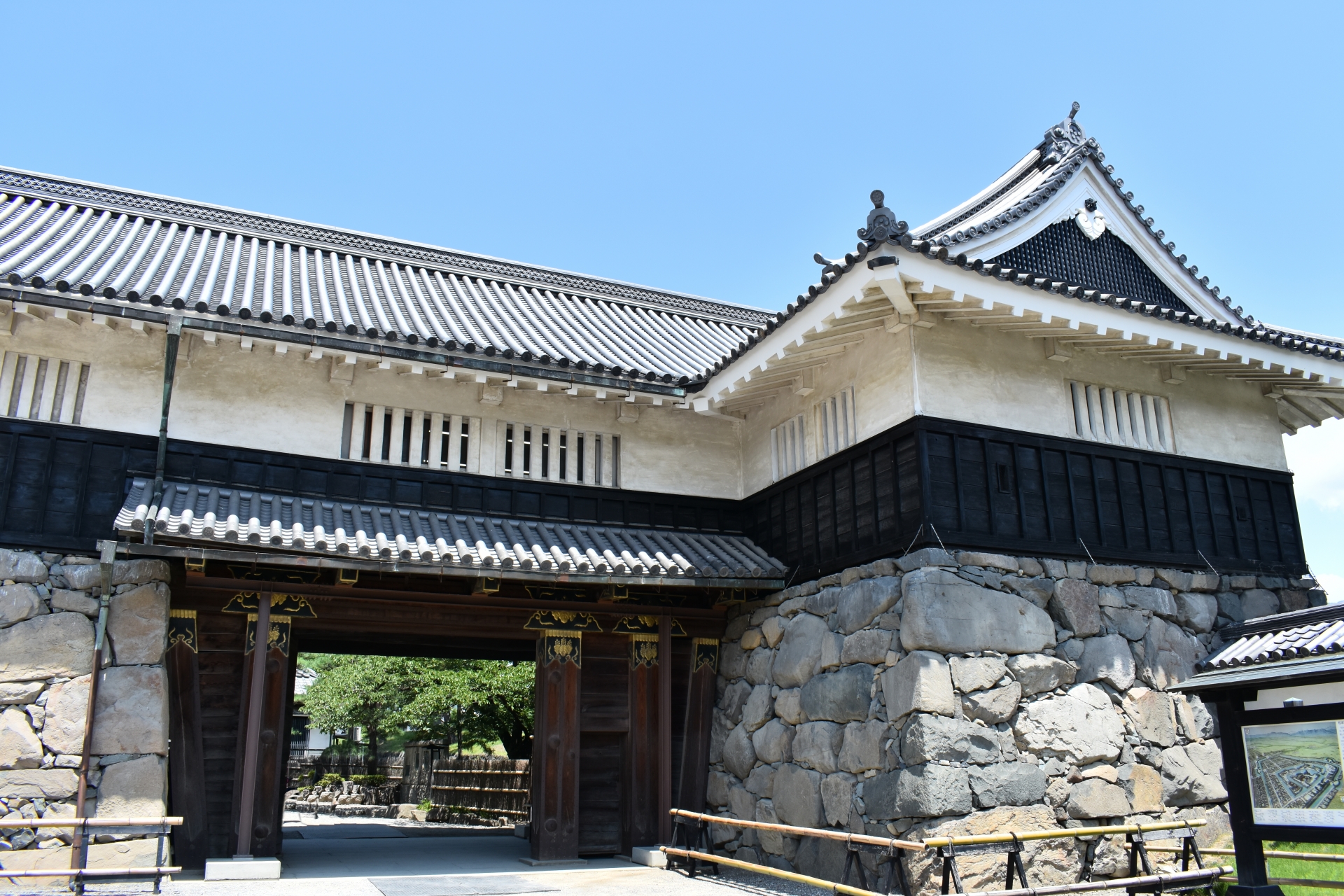Matsumoto Castle
As a registered National Treasure, Matsumoto Castle is one of the region’s most important cultural assets. Set against the impressive backdrop of the Northern Alps, the castle dates back to the end of the Warring States Period with much of the original structure still intact. One of the most beautiful historic buildings in Japan, it is one of only two 6-storey castles remaining today – yet only exists due to the intervention of local residents who have saved it from destruction more than once.
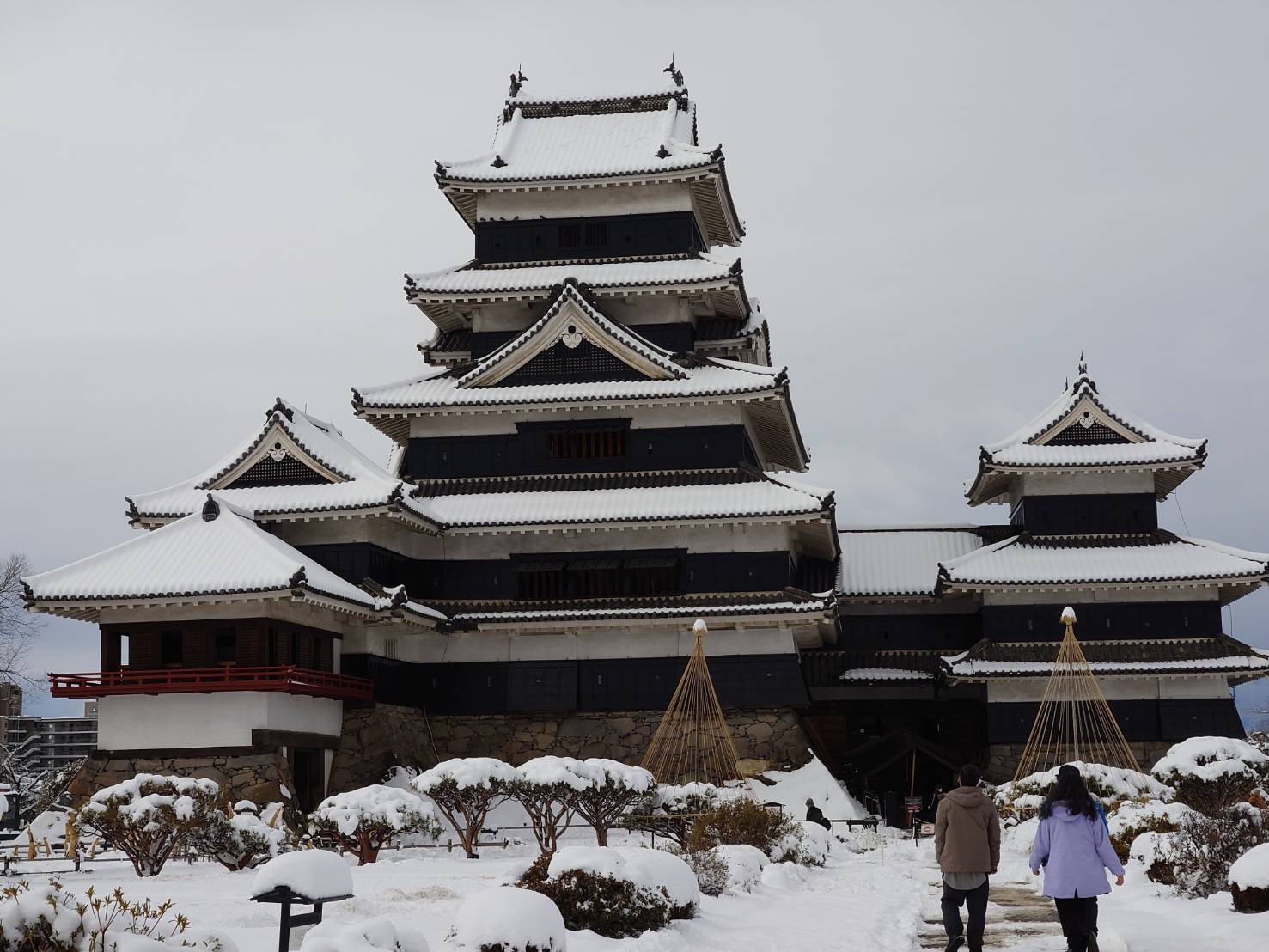
The distinctive black and white façade and beautiful aesthetic, somewhat belie the castles overall strategic design and importance. Constructed mostly in the 1590’s, the existing building retains much of its original structure including the imposing stone foundation walls with notable periods of restoration in the 20th century. Originally surrounded by an expansive system of moats, gates, other fortifications and a palace, the five structures that make-up the castle are a testament to Japan’s feudal past and bear witness to the country’s emergence from a protracted period of war and upheaval to the long, unbroken peace of Japan’s golden age, the Edo Period.
— Events and Festivals at the Castle
— Destinations Nearby Matsumoto
— 25 Things to Do Around Matsumoto
— Tours and Charters from Matsumoto
WHERE IS MATSUMOTO CASTLE?
Matsumoto Castle is located in Matsumoto City, which is the second largest city in Nagano Prefecture – behind Nagano City itself – and is located around 230KM / 3.5 hours to the north-west of Tokyo or only 70KM / 70-minutes to the south-west of Nagano City. While Matsumoto Castle is its most famous attraction, Matsumoto lies in the valley below Japan’s highest mountain range – the Hida Mountains, also called the North Alps – and is one of Japan’s most liveable cities, blending a proud samurai history and ‘mingei’ (folk craft) culture with a thriving arts and food scene. Matsumoto Station lies in the centre of the city and is serviced by the Limited Express ‘Azusa’ running to Shinjuku Station in Tokyo and the Limited Express ‘Shinano’ running to Nagano and Nagoya. Nearby the city, Matsumoto Airport is an increasingly popular point of arrival for international visitors.
THE HISTORY OF THE CASTLE
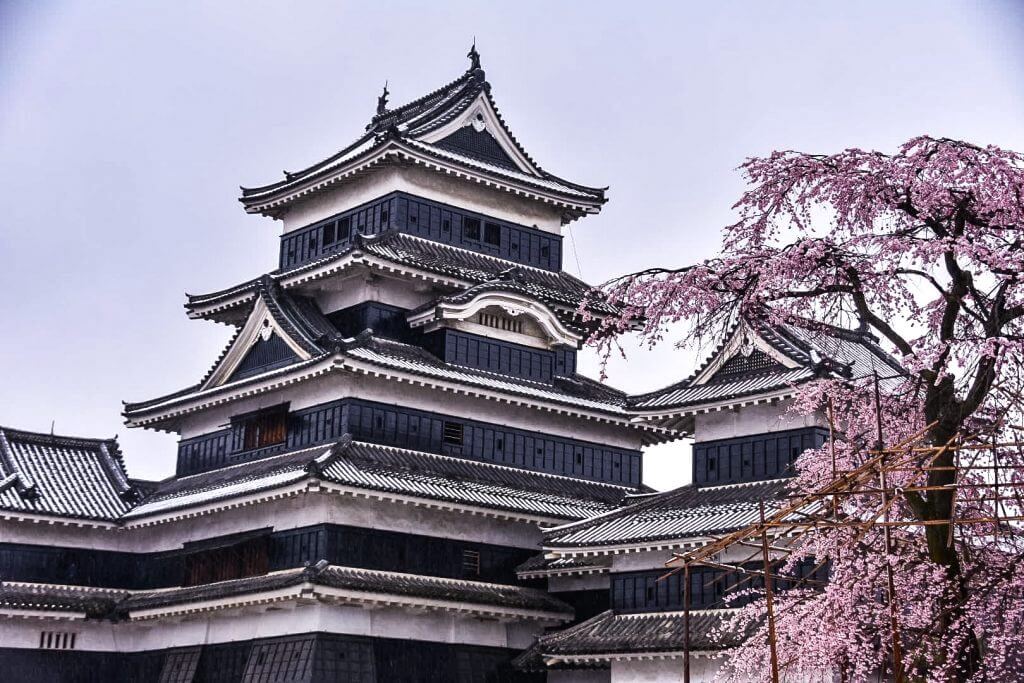
Standing around 30 meters tall, the black and white façade of Matsumoto Castle is an impressive sight. A registered National Treasure, the 5-tower, 6-storey structure is the pride of the city. Thanks to the efforts of local residents, visitors today can enjoy one of Japan’s best preserved castles – one of only two 6-storey castles in the country. The five structures which make-up Matsumoto Castle – the Dai-Tenshu (central keep) along with smaller Inui Kotenshu and Watariyagura (towers) were constructed around the years 1590 to 1594, before the Tastumi Tsukeyagura and Tsukimi Yagura (towers) were added in the early 17th century.
As such, the construction of the castle straddled the final years of the ‘Sengoku’ or ‘Warring States Period’ and the beginning of the Edo Period with the establishment of the Tokugawa Shogunate. Keen-eyed visitors will note the structural of the original towers – heavily fortified to resist siege – and later additions built during peacetime – which were ceremonial and without fortification. Originally, the palace in with the lords would have lived was to be found directly in front of the castle, but it was unfortunately destroyed along with several of the castle gates in a fire in the 19th century. Thankfully, the main keep was miraculously unscathed even as the palace burnt mere meters away.
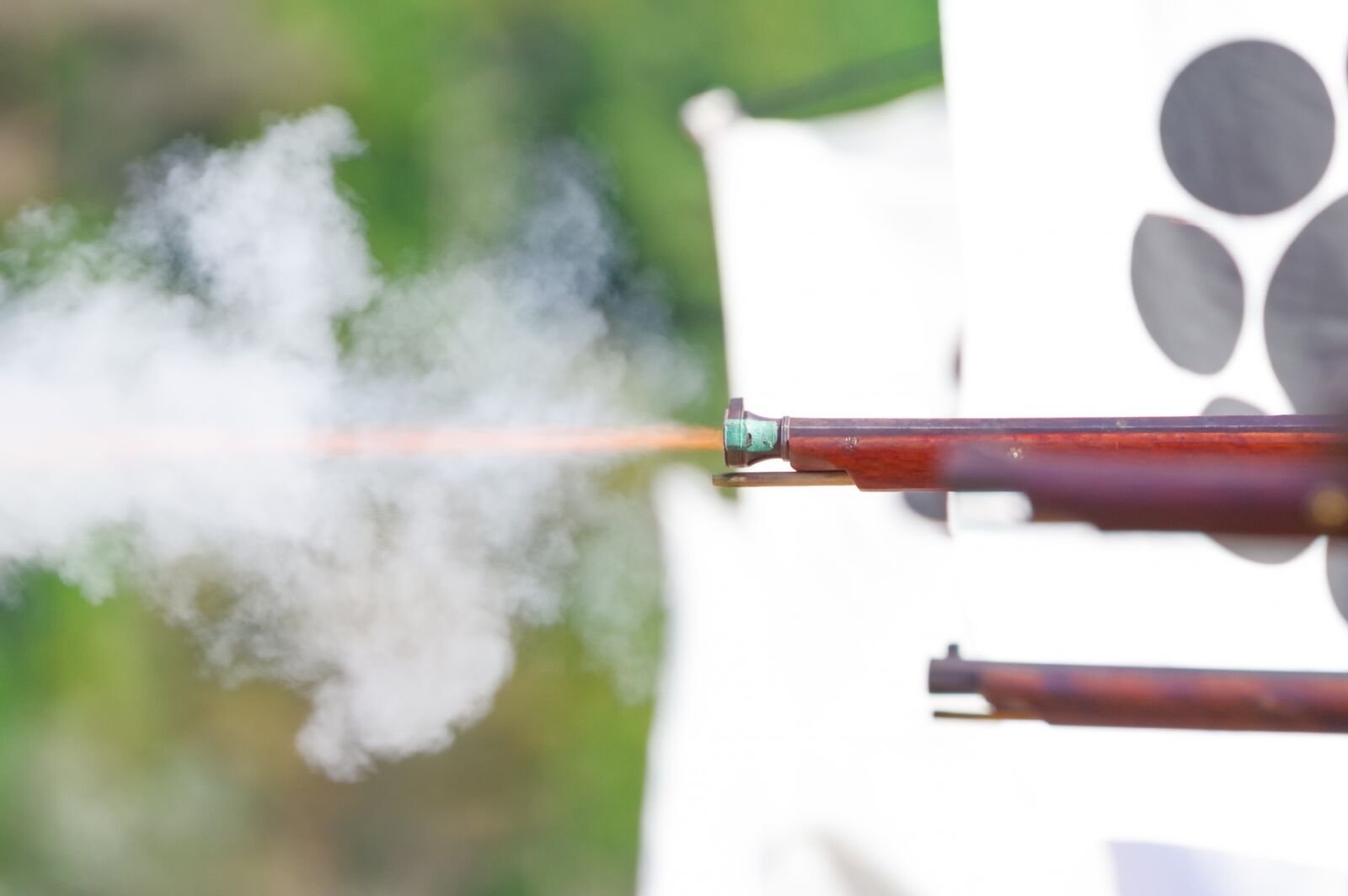
Built for gun warfare, design elements including the distancing and width of the moats and thickness of the castle walls, were determined by the range and penetration of matchlock guns in use at the time. Yet the castle also bares testament to the use of archery and other implements of war including stones and hot oil, used by the ruling ‘daimyo’ (feudal lord) and his samurai when defending the castle. Visitors entering the castle should be mindful that some staircases are steep are should not be attempted if you have limited mobility. Shoes must also be removed and carried before entering the castle. In winter, the interior is cold and navigating the stairs in socks is a little tricky, so please proceed carefully and be mindful of others.
EVENTS AND FESTIVALS AT THE CASTLE
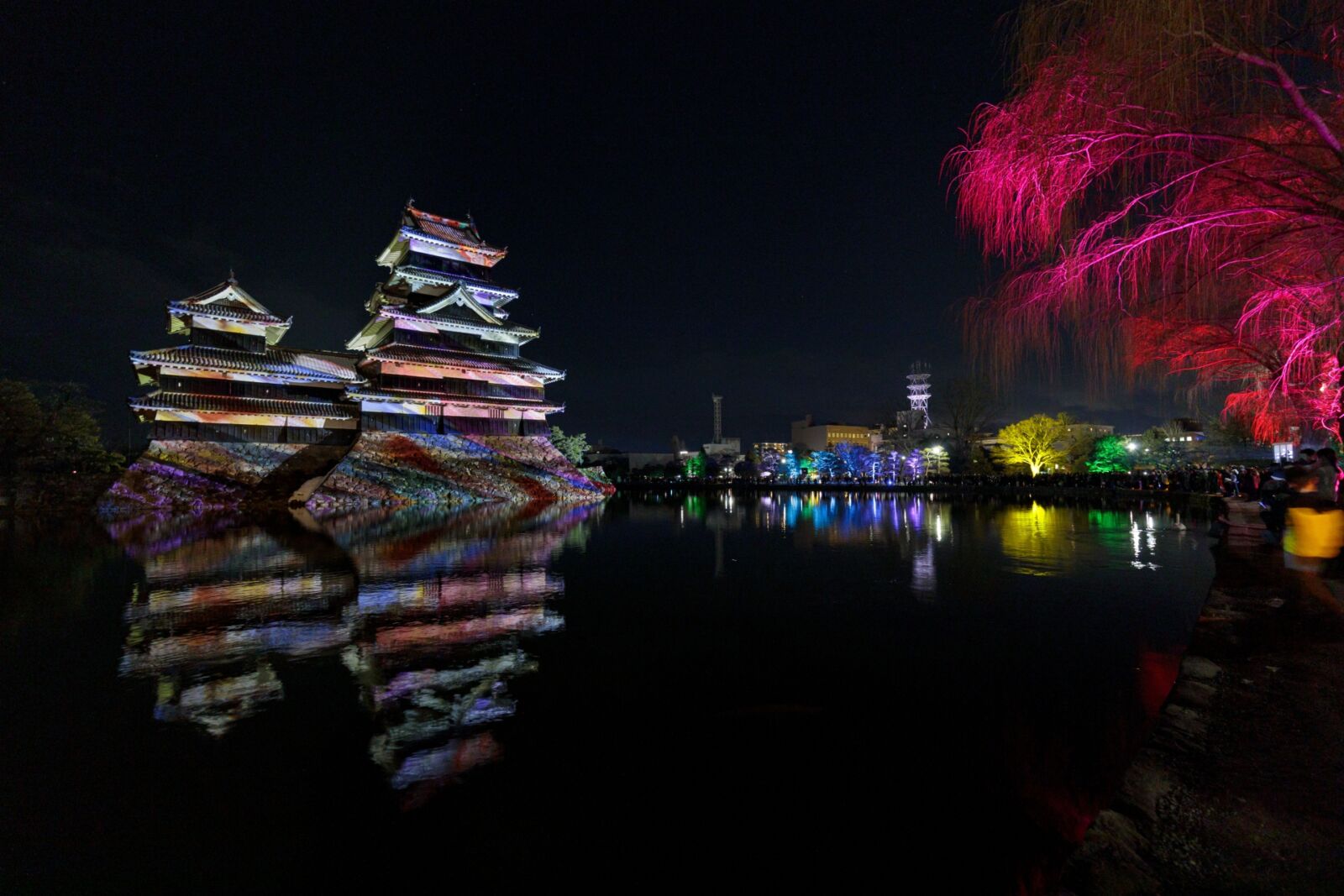
Matsumoto Castle is home to many events and festivals throughout the year, providing a reason to come back even if you have visited previously. With something special happening almost every month, it pays to check the below schedule before your visit:
New Year Celebration / first week of January / 10:00 to 15:30 / admission is free
‘Taiko’ (traditional) drums boom as the gates open, welcoming visitors into the castle grounds to celebrate the New Year together with hot ‘amazake’ (non-alcoholic, sweet sake), traditional performances, and souvenirs available to buy.
Castle Light Show and Illumination / mid December to mid February / 18:00 – 21:00 / admission is free
The castle is illuminated beautifully in this wonderful light show. Although it will be cold outside, it is well worth it to sit and enjoy the view of the many colorful lights and images projected onto the castle.
Ice Carving Festival / late January/early February / from late evening onwards / admission is free
Against the backdrop of the illuminated castle, professional ice sculptors carve beautiful statues with the public looking on. If you want to witness the carving please ensure you are there on the evening of the first night.
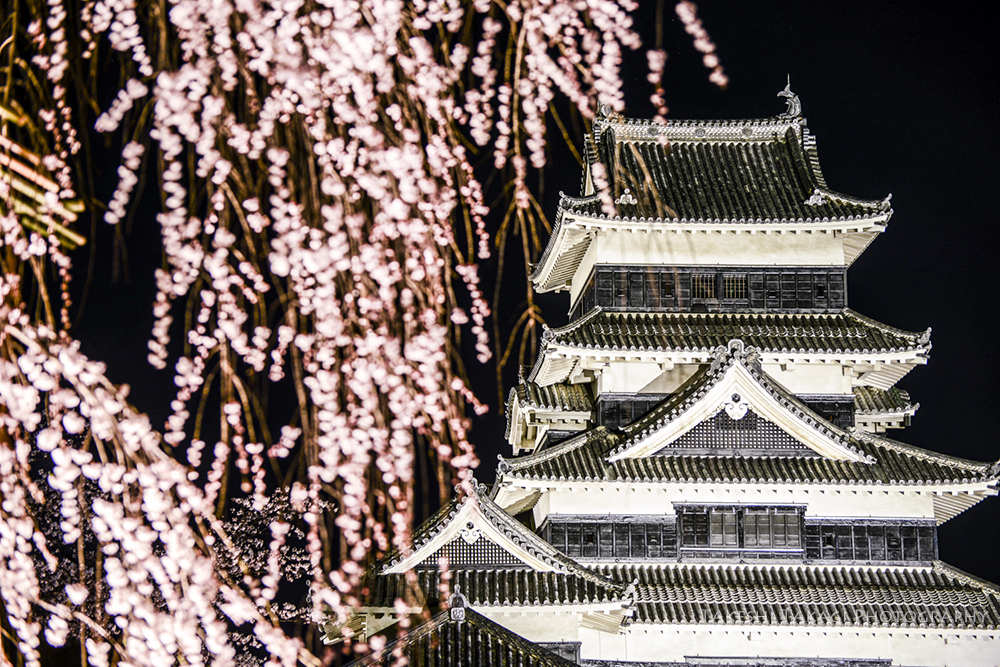
Night-time Cherry Blossom Viewing & Corridor of Lights / April / 17:30 to 21:00 /admission is free
Held each year to celebrate the bloom of Matsumoto’s cherry blossoms, the exact timing of this event is a little tricky to predict. As the weather warms and the bloom can be forecast with some level of certainty, the official beginning of the cherry blossom season will be announced and the festivals will begin three days later.
Soba Festival / early-October / 10:00 to 16:00 / admission is free
Taking place outside the castle, this is one delicious reason to head to Matsumoto. The region is famous for its ‘soba’ (buckwheat) noodles and costing only JPY500 per bowl, the festival is a great chance to sample different varieties from local producers.
Old-fashioned Gunnery Demonstration / late October and early May / times vary / admission is free
The Matsumoto Castle Gun Corps puts on an impressive display of traditional gunnery in full armor. This popular event is captivating to watch and provides a running commentary in English.
EXPLORE MATSUMOTO CITY
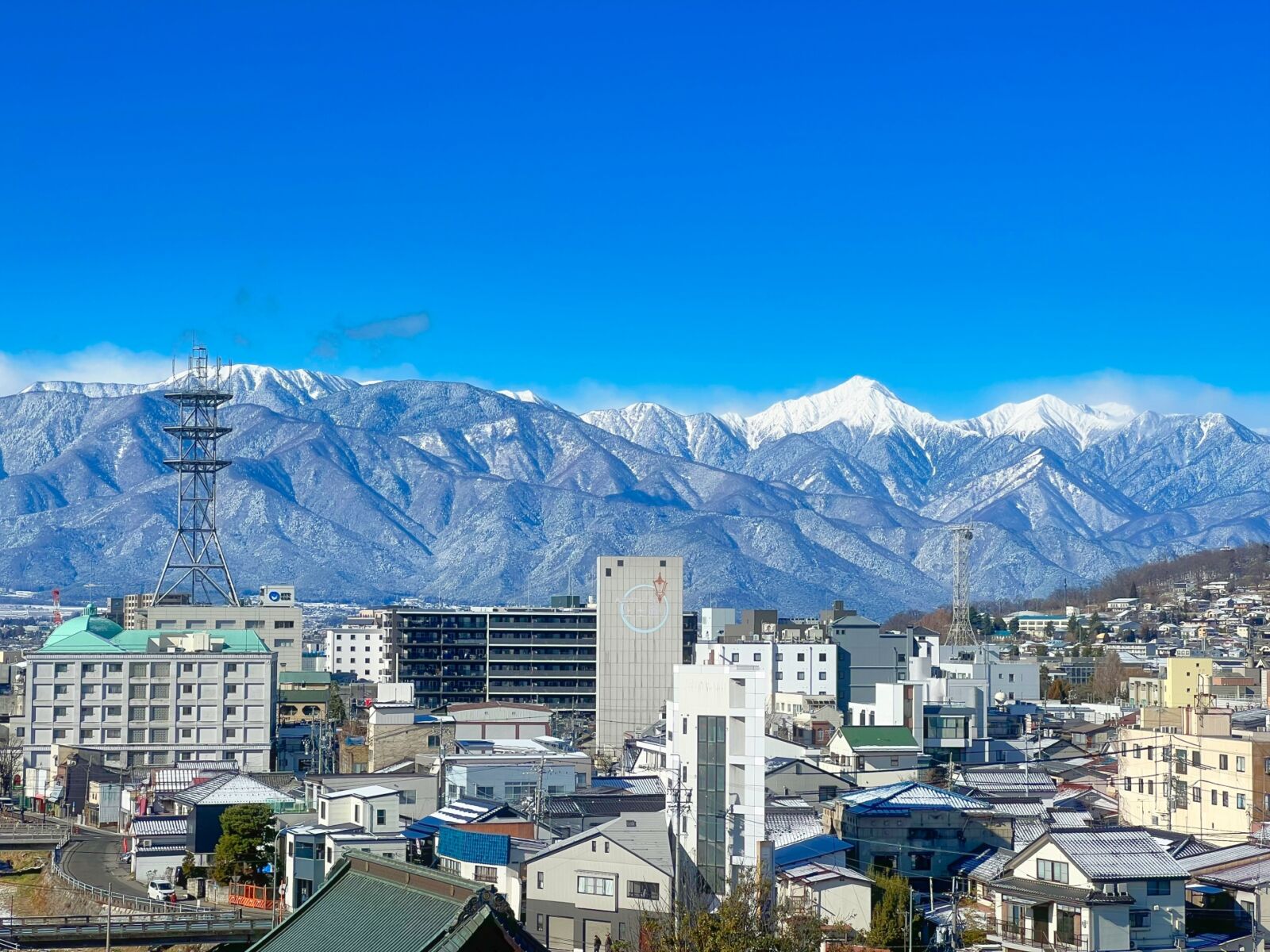
Matsumoto Castle is without doubt the beacon that draws visitors to the city but once here, you’ll discover a lovely little town with plenty to keep you entertained for a day. Once a wealthy merchant town, areas of Matsumoto retain its historic charm interspersed with modern development which caters to a burgeoning arts, music and food scene.
Most visitors to the Matsumoto will arrive and depart via Matsumoto Station. All attractions listed below – in addition to the castle – are within walking distance of the station making each readily accessible for day-visitors or if you are staying overnight.
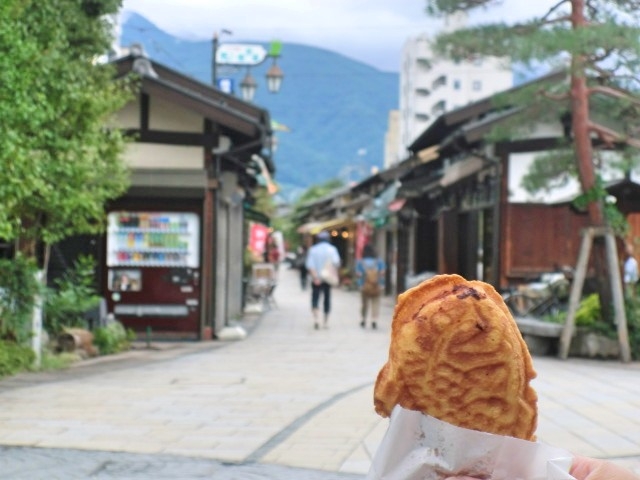
Nawate-Dori/ Kaeru Michi: This quaint alley is home to food vendors, craft and antique stores of shops, cafes, and restaurants. Approximately 5 minutes walk from the castle, this small but cute precinct is one of the city’s most charming little discoveries. Following a river, Nawate-Dori is also referred to as ‘Kaeru Michi’ or ‘Frog Street’. Even now you may hear frogs at night, and in June even see fireflies along the river.
The street boasts some seriously good food vendors selling ‘soba’ and ‘udon’, ‘taiyaki’ (pictured above) and ‘senbei’ and is well-worth a stroll – especially for those frog-fans amongst us or if you’re searching for a unique souvenir or antique while in Japan.
Yohashira Shrine: Located near the end of Nawate Street, Yohashira Shirine is unusual among Shinto shrines in that it is dedicated to four deities. The name ‘Yohashira’ translates to ‘four pillars’ and with four gods in residence, the shrine is said to have particular power and sought-out by those looking to have an important wish granted. Conveniently located near the intersection of Nawate/Frog Street and the road leading to the castle, a quick visit to the shrine is worthwhile as you may as well try your luck and see if your wish comes true!
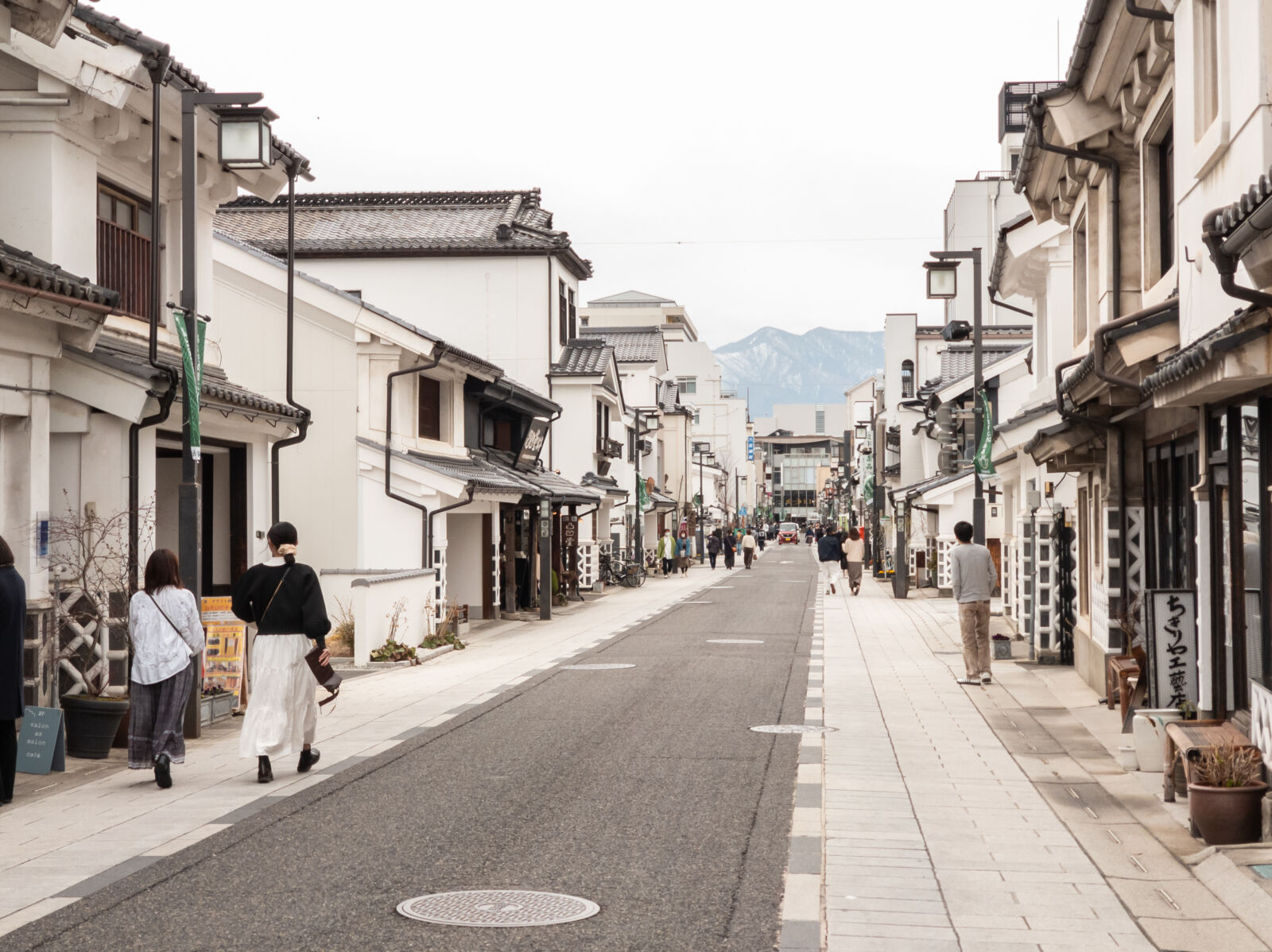
Nakamachi Street: Midway between the station and castle – and running parallel to Nawate/Frog Street on the other side of the river – Nakamachi is an attractive street known for the preservation of its many traditional storehouses and merchant buildings. The distinctive white and black, criss-crossed pattern decorates the bottom half of the buildings, imbuing the street scene with a unique and pleasing character.
The street is known for its many stores selling traditional crafts including lacquerware, pottery and woodcraft. Several restaurants, cafes, confectionaries, good coffee houses and Matsumoto Beer Brewery’s small store make Nakamachi and the surrounding side streets worth exploring.
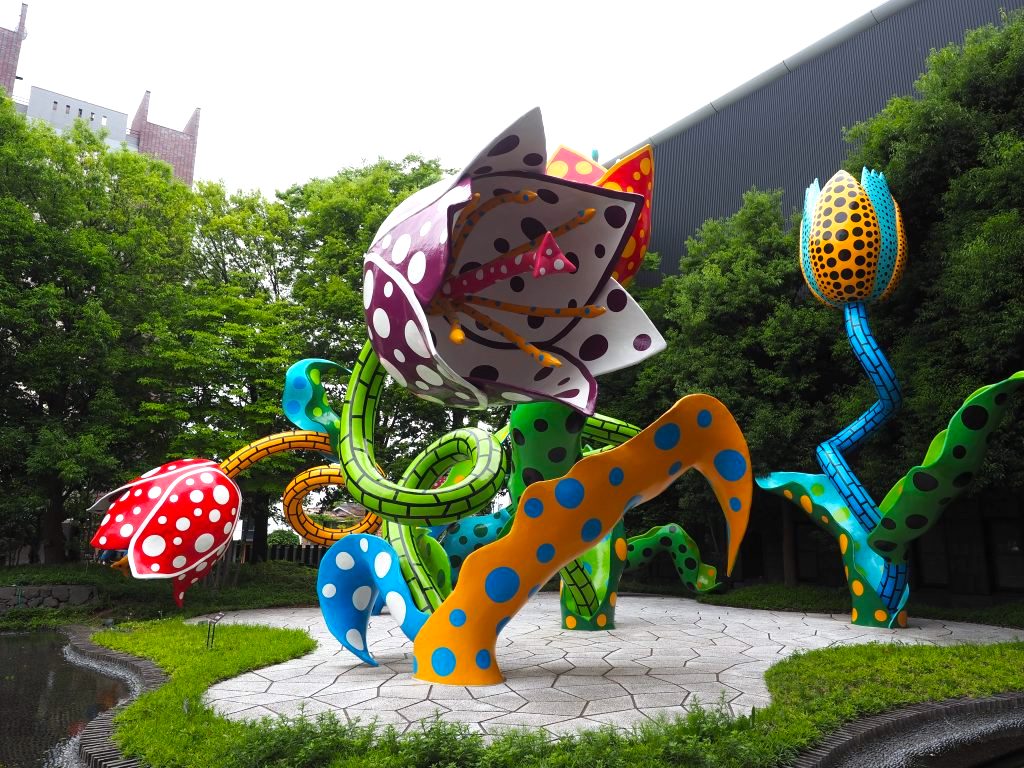
Matsumoto City Museum of Art inc. Kusama Yayoi Collection: As hometown to arguably Japan’s most famous contemporary artist, Kusama Yayoi, it is no surprise to find that the city’s art museum houses a permanent exhibition of her artwork. Any visitor to the city will soon notice the many polka-dotted features of Matsumoto – in homage to her distinctive style of art. Visitors will certainly notice Kusama’s large installation which sits outside the museum! The Museum of Art also exhibits works by other local artists and travelling exhibitions of both Japanese and international artists.
Ukiyo-e Museum: As a style of art, ‘ukiyo-e’ or ‘floating world’ is a little hard to define. Encapsulating a period in history and subject matter as much it does a form of art, ukiyo-e captures the ephemeral, hedonistic world and occupations of Edo Period Japan. Japan’s most famous artist, Hokusai Katsushika, was the master of ukiyo-e and this small but engaging museum displays several of his original works among many other artists. The collection is regularly rotated in order that visitors, including local residents, have the opportunity to see the entire collection over time.
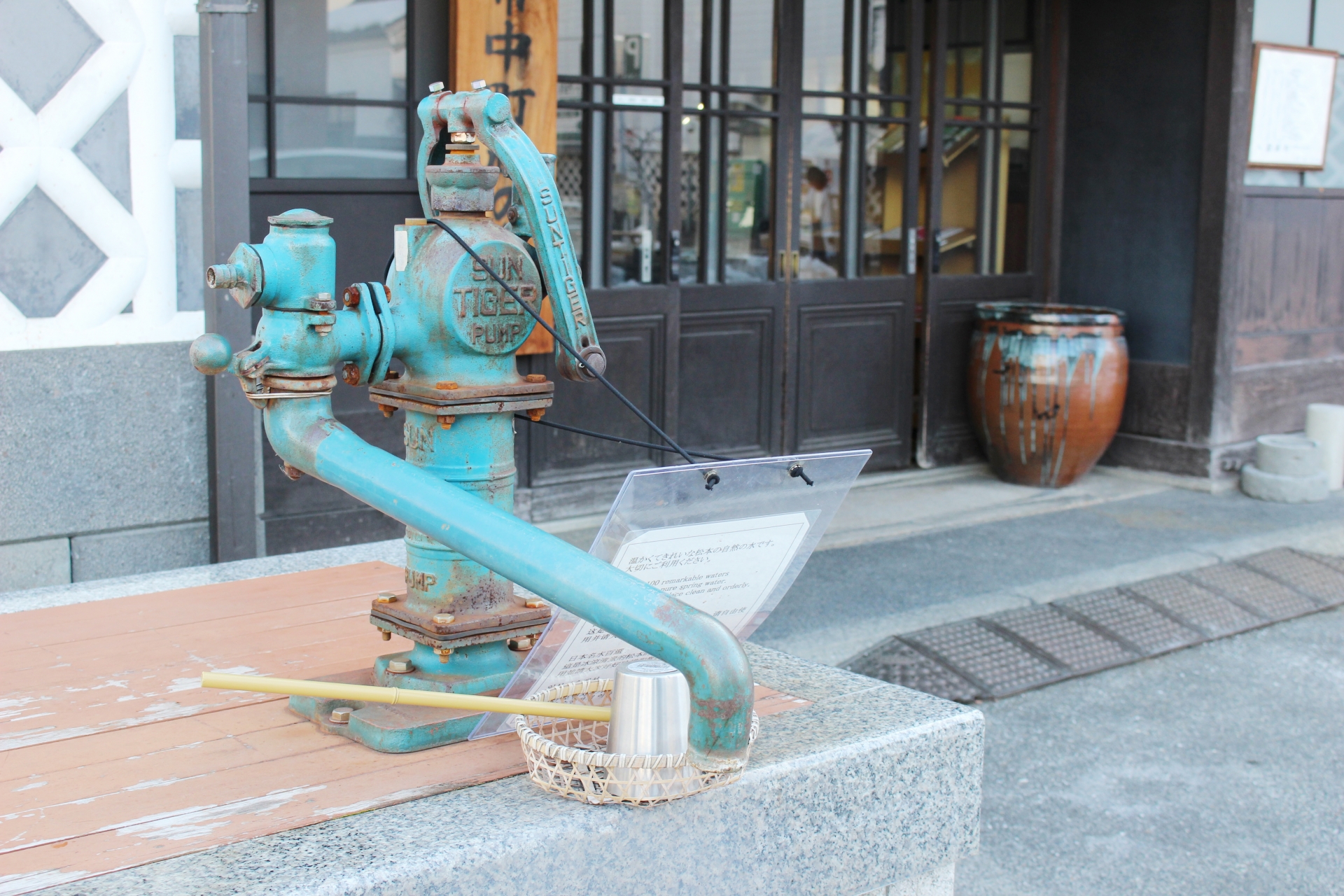
Natural Springs & Historic Wells: Matsumoto is blessed with an abundant supply of ground water, which comes to the surface as fresh spring wells. Literally dotted through the city, you can’t miss these surprising features in a modern, urban center! The water is pure and safe to drink and locals relish quenching their thirst with the natural spring water, especially in the heat of summer. Just look for the pumps and shimmering basins of water. They really are there for you to enjoy!
Matsumoto City Museum: Located only a few minutes walk from Matsumoto Castle, this newly renovated feature of the city is a great way to understand more about what the castle was used for and how the city came to be. With many of the exhibits having English explanations provided, this museum offers enough to keep you entertained for a couple of hours while teaching you a lot about the history of the area.
DESTINATIONS NEARBY MATSUMOTO
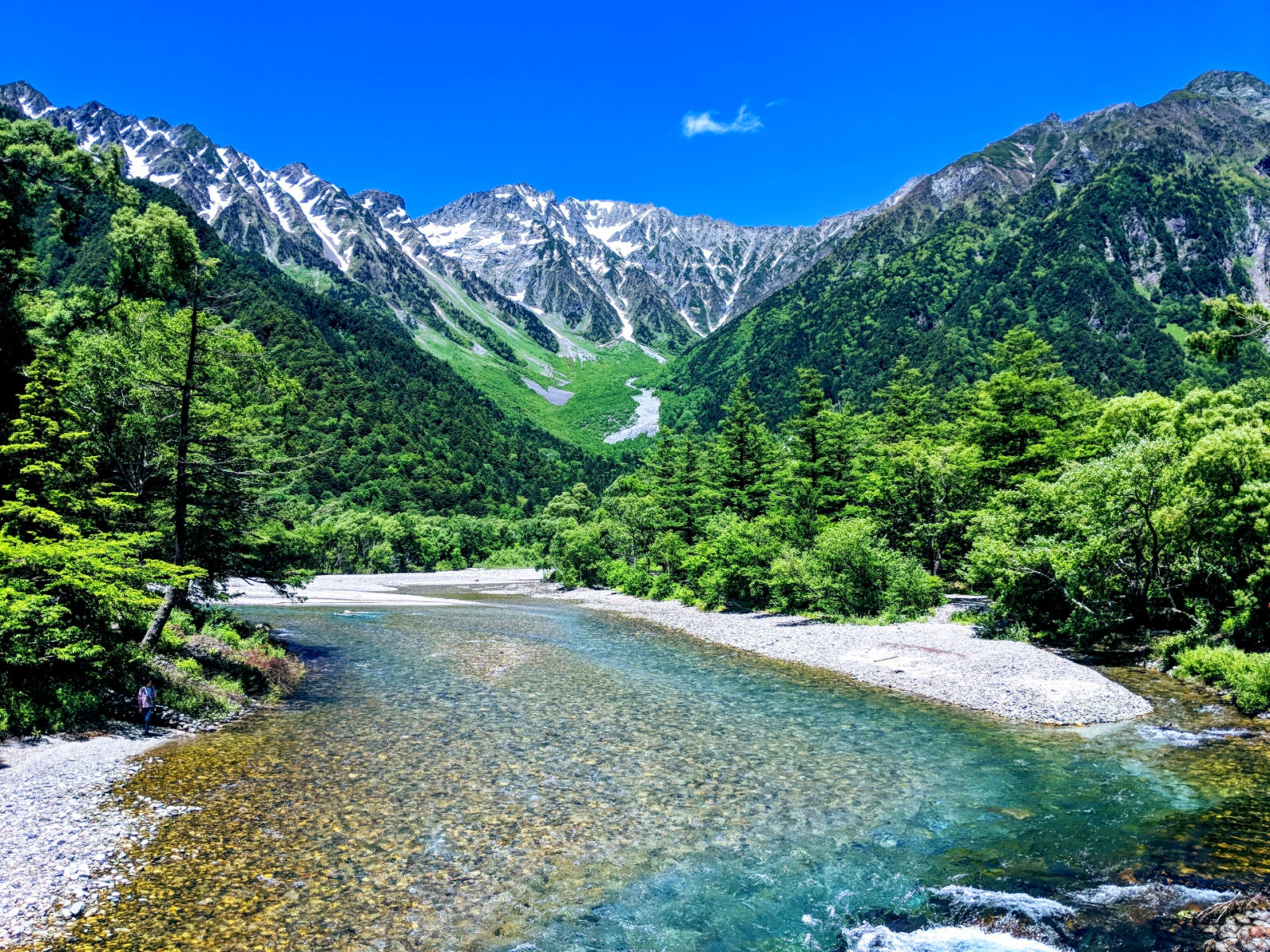
1 Day Tour
| 1-Day Tour from Nagano and Matsumoto: Kamikochi & Matsumoto Castle | |
|
| |
| Period | April to November |
| Time | 08:15 – 18:30 |
| Meeting Place | Nagano Station Matsumoto Station |
| Adult Rate | ¥23,800 |
| Child Rate | ¥11,900 |

Matsumoto is a great location from which to explore a number of attractions around Central Japan, and could easily serve as a base for a few days of exploration. While all of the attractions listed are accessible through public transportation, it is often easier to rent a car and drive yourself, if you feel up to the challenge.
Kamikochi: Approximately a 1 hour drive from Matsumoto, Kamikochi is one of Japan’s most spectacular alpine landscapes – a true oasis nestled deep within the Chubu Sangaku National Park. Offering some of Japan’s best hiking, stunning alpine vistas, and range of accommodation options, a visit to Kamikochi can be easily combined with your visit to Matsumoto Castle.
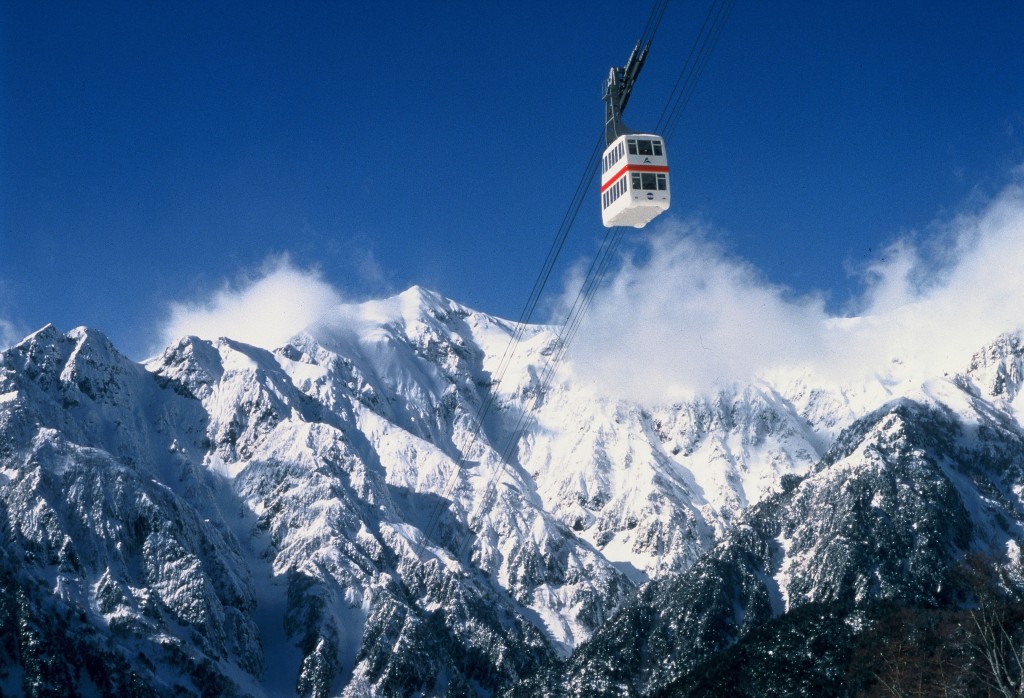
1 Day Tour
| 1-Day Tour from Takayama: Hida’s Hidden Gems – Hida Folk Village, Limestone Caves and the Shinhotaka Ropeway | |
|
| |
| Period | All Year Round |
| Time | 09:00 – 17:30 |
| Meeting Place | Takayama Station |
| Adult Rate | ¥28,800 |
| Child Rate | ¥23,000 |

Hirayu Onsen: part of the larger hot spring area known as Okuhida – is only a 20 to 30 minute drive on from Kamikochi (depending on your guesthouse of choice). The area has many traditional ‘ryokan’ (guesthouses) with their own ‘onsen’ (natural hot springs) in which to soak and unwind. While accommodation in this area can be expensive, it doesn’t have to be. This makes Hirayu and Okuhida Onsen a great nearby option for visitors to Kamikochi – just a couple of the many great onsen towns in Central Japan. Also in Okuhida, the Shin-hotaka Ropeway is famous throughout Japan and on a clear day, offers outstanding views of Mt Hotaka and the surrounding North Alps.
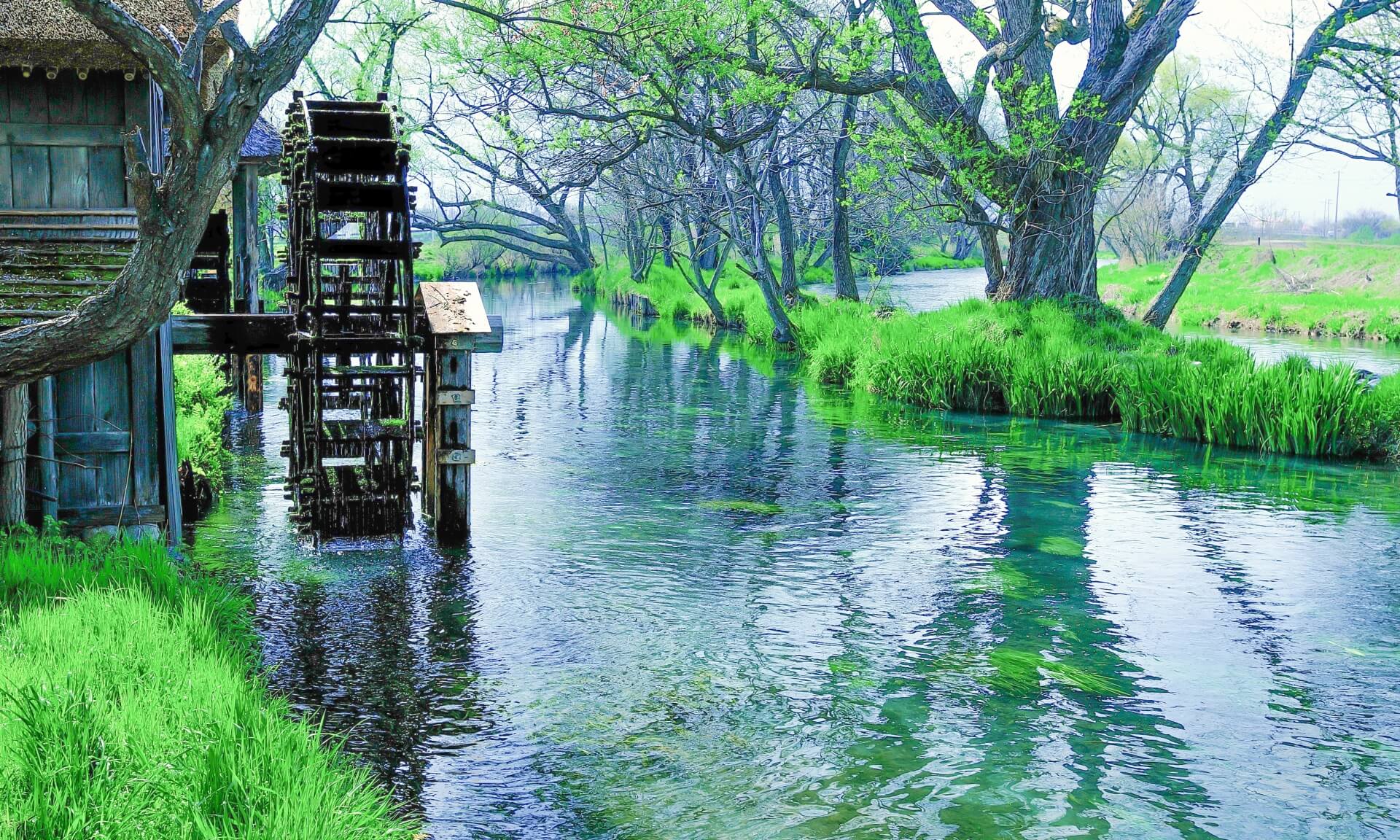
Daio Wasabi Farm: One of Japan’s largest wasabi farms, this expansive agricultural area boasts idyllic rural scenery and a number of delicious products made using wasabi. With a number of cafe’s, gift shops, and eateries, its a great place to spend a morning or afternoon while learning about wasabi production. Easiest to access by car, you can also take the train to Akashina station and rent a bicycle to ride from there.
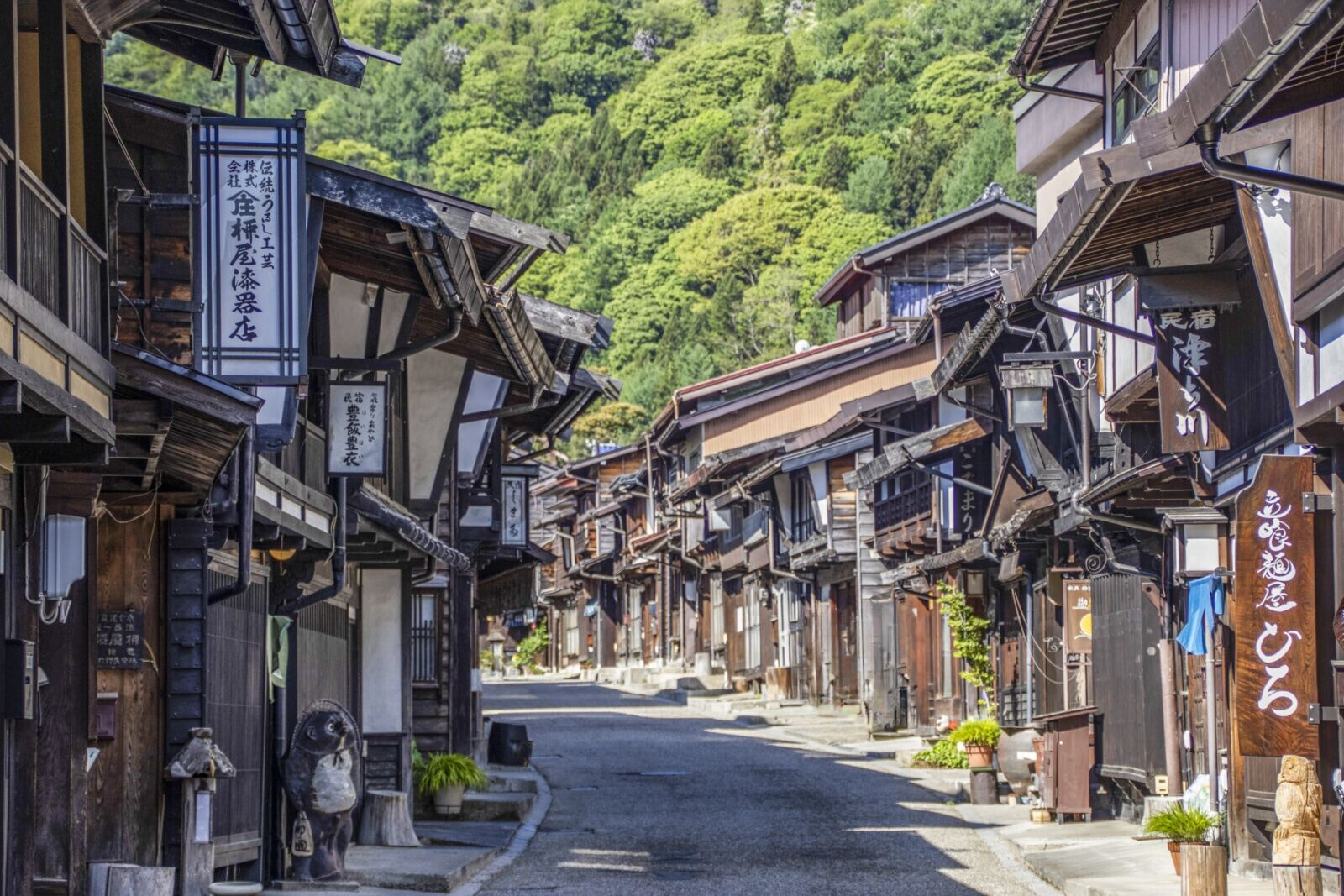
1 Day Tour
| 1-Day Tour from Nagano and Matsumoto: Experience Matsumoto Castle and Narai-juku | |
|
| |
| Period | All Year Round |
| Time | 08:15 – 18:15 |
| Meeting Place | Nagano Station Matsumoto Station |
| Adult Rate | ¥23,800 |
| Child Rate | ¥11,900 |

Narai-Juku: Once a post town on the Nakasendo road, and today among the best preserved of all such towns, Narai offers over 1 km of traditional buildings lining its quaint main street. Beautiful in any season, summer is the most lively time with many more shops being open for business in comparison to the depths of winter when it is extremely quiet (but still charming in deep snow with icicles hanging from the roofs).
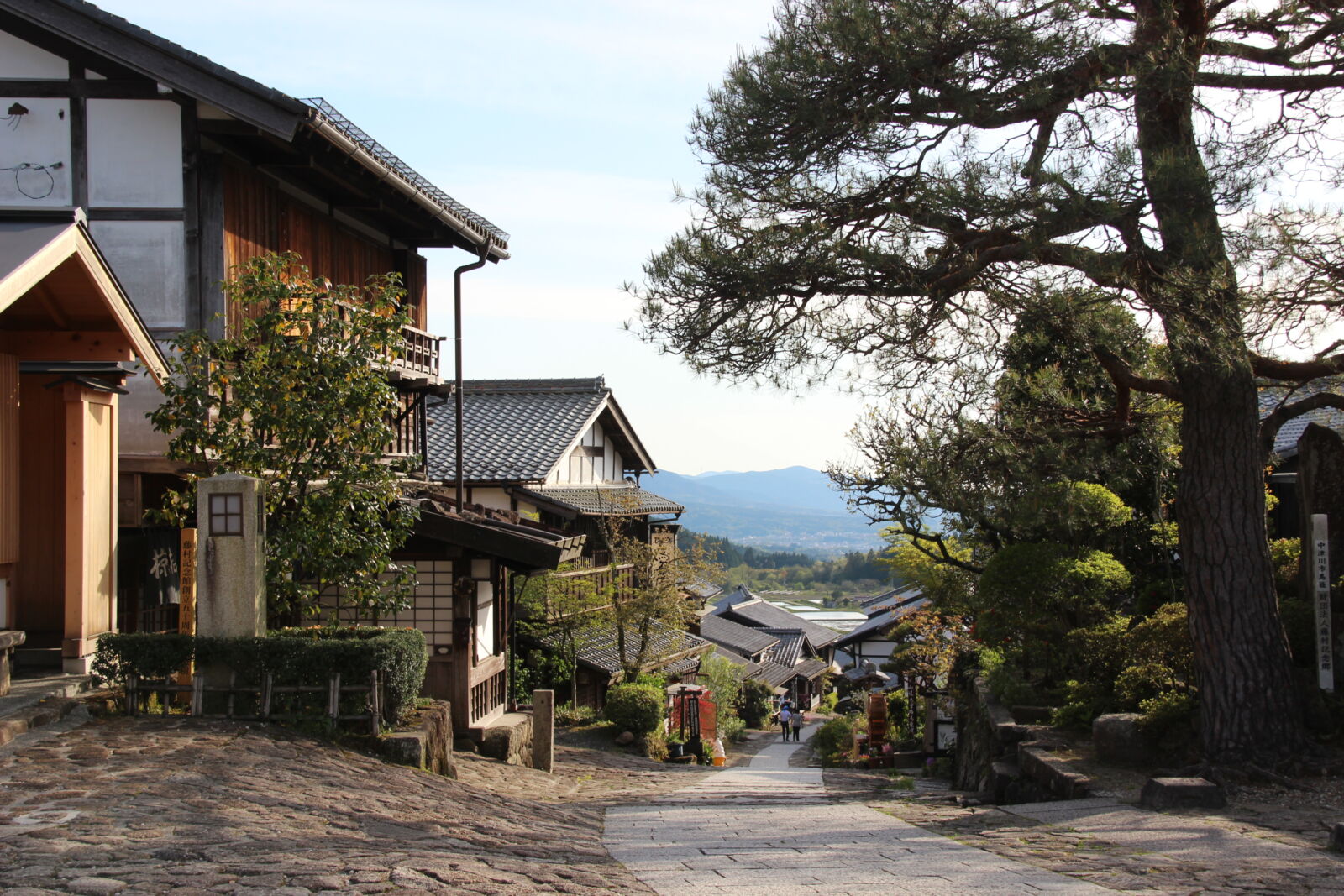
Magome and Tsumago: These two towns are, similarly to Narai-juku, traditional post towns located along the old Nakasendo road. Each with their own charm, they provide a great glimpse into how most towns in Japan once looked. A great way to see these towns is to start at one – either will do – and walk the 8km distance between them on the Nakasendo, which includes many sections which have preserved the original cobblestones. If you are lucky you may even see wildlife including Japanese Macaques (also known as Snow Monkeys)
25 THINGS TO DO AROUND MATSUMOTO
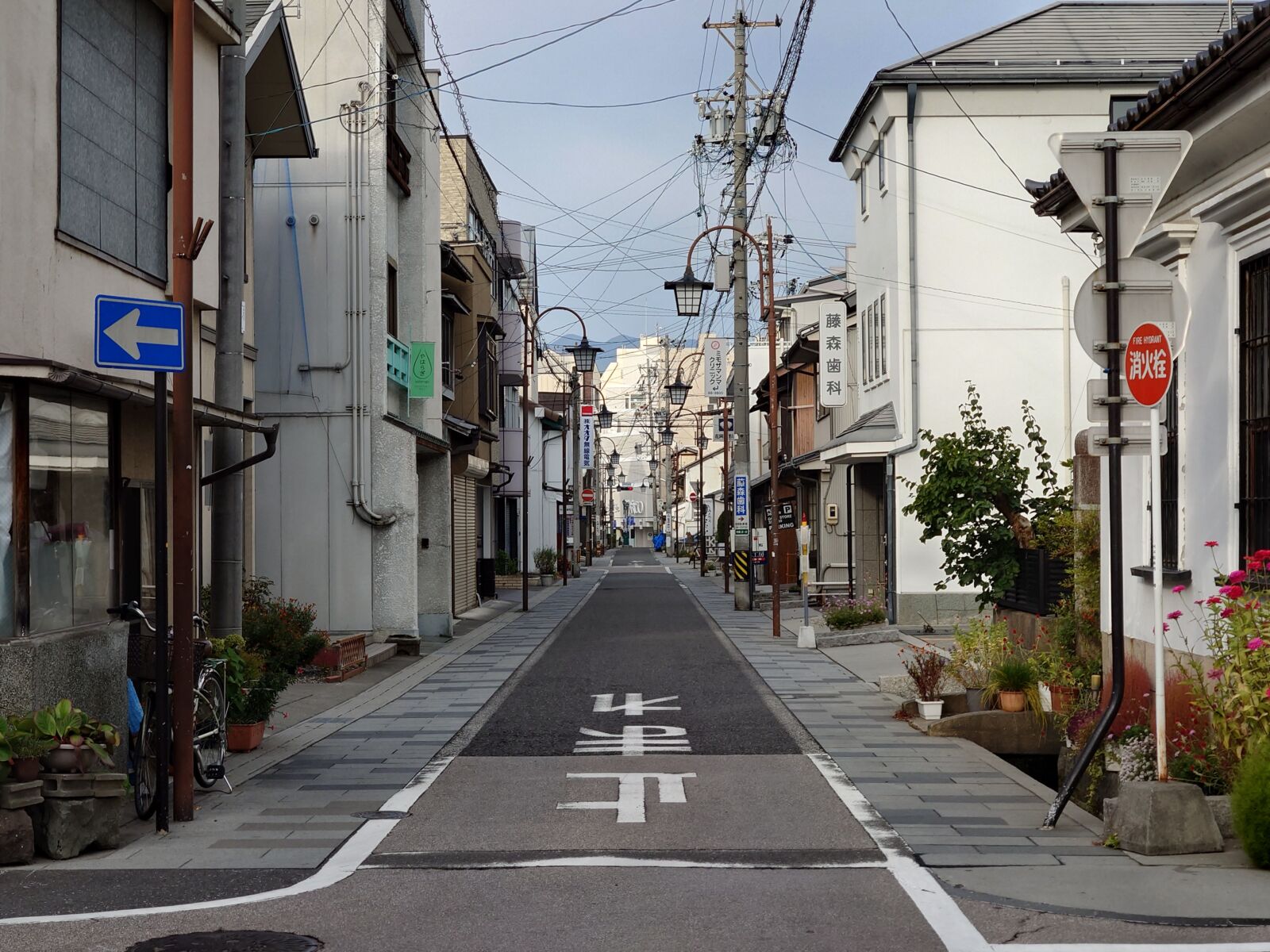
With all of these great things to do around the area, it would be impossible to fit them all in one article. For more information on what there is around the castle, the city, and the wider region, please see our page ‘25 Things to Do Around Matsumoto & Where to Stay‘. You will be sure to find something that comes in handy!
TOURS AND CHARTERS FROM MATSUMOTO
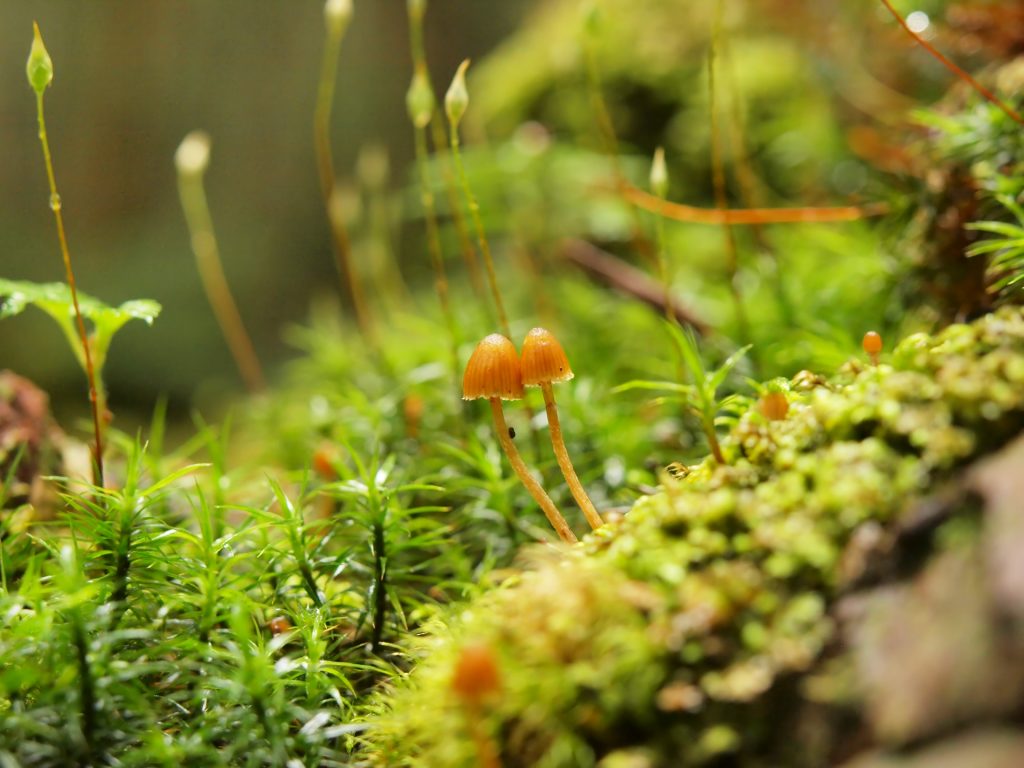
Based in Central Japan and operating all-year-round, we offer multiple highly entertaining group-tours from Matsumoto that are sure to please. All tours are led by locally-based guides and are formulated to show you the best of the region. Our tours are fun, interactive and family-friendly. For more information, or to book a tour, click on the banner or button below.
1 Day Tour
| 1-Day Tour from Nagano and Matsumoto: Kamikochi & Matsumoto Castle | |
|
| |
| Period | April to November |
| Time | 08:15 – 18:30 |
| Meeting Place | Nagano Station Matsumoto Station |
| Adult Rate | ¥23,800 |
| Child Rate | ¥11,900 |

This must-do tour combines a visit to Matsumoto Castle, one of Japan’s best remaining original castles, with a trip to the gem of the Japanese Alps, Kamikochi. Making what would otherwise be a complicated journey easy, or tour vehicles will be with you the whole day to simplify the process. Operating from April until November, any season is a good time to come and see what this dynamic city has to offer.
1 Day Tour
| 1-Day Tour from Nagano and Matsumoto: Experience Matsumoto Castle and Narai-juku | |
|
| |
| Period | All Year Round |
| Time | 08:15 – 18:15 |
| Meeting Place | Nagano Station Matsumoto Station |
| Adult Rate | ¥23,800 |
| Child Rate | ¥11,900 |

If you are more into culture than nature, then why not swap out Kamikochi for the lovely Narai-juku on this day tour? Starting with a visit to Matsumoto Castle as in the above tour, the afternoon will instead be occupied by a visit to a post town hailed as the largest and best preserved in Japan. Operating year round, this is a great option in winter when Kamikochi is closed as well.
1 Day Tour
| 1-Day Tour from Nagano & Matsumoto: Step into the Past on the Nakasendo | |
|
| |
| Period | March – June / September – December |
| Time | 08:15 – 18:30 |
| Meeting Place | Nagano Station Matsumoto Station |
| Adult Rate | ¥24,900 |
| Child Rate | ¥12,900 |

Head to the historic Nakasendo Trail in the southern regions of the Kiso Valley on this walking tour. With an 8km walk between the well preserved towns of Tsumago and Magome, you will get a chance to stretch your legs on this ancient road and take in the beautiful nature of central Japan. With pick up from Nagano and Matsumoto, it is easy to join this tour no matter where you are in the region.

Of course, we also offer private tours and transport in and around the Matsumoto/Kamikochi area, and other regional destinations. Our drivers and vehicles are fully certified, allowing us to transport you to and from your preferred destinations in combination with any activity that suits your schedule. All vehicles are well-maintained and in good condition, allowing you to relax and enjoy your ride to wherever you are going.
We can arrange both private tours with an English-speaking guide or a private charter, including a private vehicle and driver but without a guide. We’d love to be part of your adventure in Central Japan and help you discover even more!
Warning: Undefined variable $dev_switch in /home/apricotweb/snowmonkeyresorts.com/public_html/old/wp-content/themes/WP_SNOWMONKEYRESORTS/functions.php on line 2611



